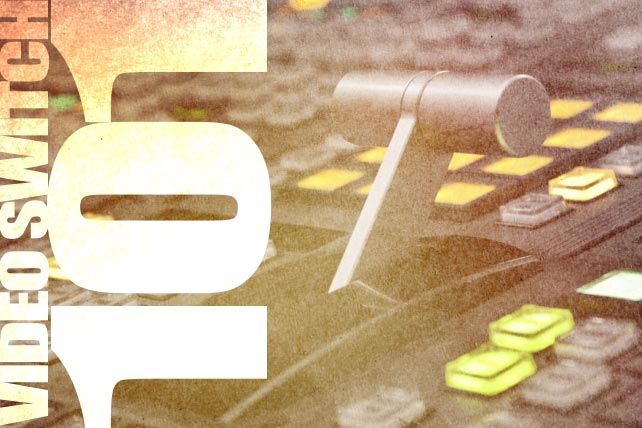A lot of churches are new in the realm of switching video, and the pressure to do a good job is amplified when you add live streaming to the mix. Somehow, that makes us want to do better, this idea that the world is watching. Let’s go over the basics of a video switcher so you can better understand what it does and how to make it do what you want.
First, you need to understand that a video switcher simply switches between different sources. In most cases, your sources will be video cameras that are feeding you signals that you can see on a screen. You use these previews to decide which camera to switch to and when.
Switchers can give you hundreds of options for transitions, from cuts and dissolves to 3D effects with cubes, blinds and other really distracting eye-candy. I prefer to follow what broadcast professionals use: cuts and dissolves. My general rule of thumb is cuts always except for music, though if the beat is fast enough, you can get away with cuts.
In order to switch, you must first select a new source to change to, and then either push the correct button on the Program bus, or select the next source on the Preview bus and push the Cut button. Either method will get you the same result. To get a dissolve, you will need to use the Preview bus and the Auto Transition button or your switcher’s equivalent button to make the transition happen.
Keep in mind that switchers come in a huge variety of sizes and with varying feature sets, so it pays to read the manual and find out exactly what yours can and cannot do and how to go about doing it. The best way I’ve learned is to set up a couple cameras and practice, following the manual, when nothing is going on in the auditorium. This way there’s no pressure to get it right the first time, and when you are comfortable to do it live, you’ll be able to make it happen without even thinking about it.
If you want to bring in a lower third or a logo bug, it can be a bit more tricky. You’ll have to decide if you’re going to use a DSK (Downstream Key), a luma key, a chroma key or some other keyer that either your software is providing (ProPresenter does a lot of this work for you with many of their layers). From wikia.com, “A downstream key (or DSK) is a method of Matte keying, so you use three image or video signals. You have the base signal, where the fill signal is keyed on to, using the key signal to control the opacity of the fill signal. This results in a new signal, that you can use as an input for another DSK. This technique is used in television production, where you show the station name in a corner (DSK 1), and need a name title for a guest (DSK 2), while showing subtitles for translation of his/her speech (DSK 3).”
Most budget switchers will only have one DSK, so you’ll have to work around that with software (again, ProPresenter can do amazing things for on-screen graphics with keying built in). Tricaster, Broadcast Pix and other software-based switchers allow you to create your keyed graphics in the software and bring them in for an “all-in-one” solution.
This brings me to my final point: Make sure you know exactly what your switcher will be able to do and, more importantly, what it won’t be able to do before you make the purchase. Too often, churches will get a great “deal” on a switcher just to learn that it fills less than half of their current needs and none of their future needs.
Whether you are a hardware video switcher or not, what are some basic best practices you would use?













